I finally got the formula for the distance from a curve to a point running:
approx = 2 * (b * (Math.Log(a) * (Math.Log(k) * Math.Pow(k, (b * cycleX))) * Math.Pow(a, (Math.Pow(k, (b * cycleX)))) * (Math.Pow(a, (Math.Pow(k, (b * cycleX))))) - points[i].Y) + cycleX - points[i].X);
So, as approx goes closer to 0, the cycleX gives me the right coordinate from which to calculate the distance to the point.
The only issue here is defining a way to modify cycleX. I tried using a series of if's, but with them sometimes approx ends up jumping on to positive numbers (coming from negatives). What should I do to get the right modification to the value of cycleX?
Note: It usually needs to come down to 0.0001 to get something within the range of -1 to 1.
